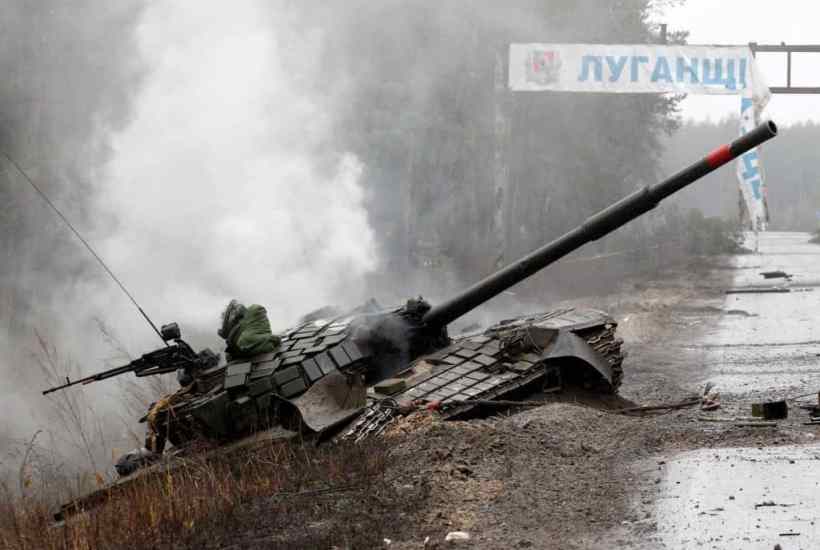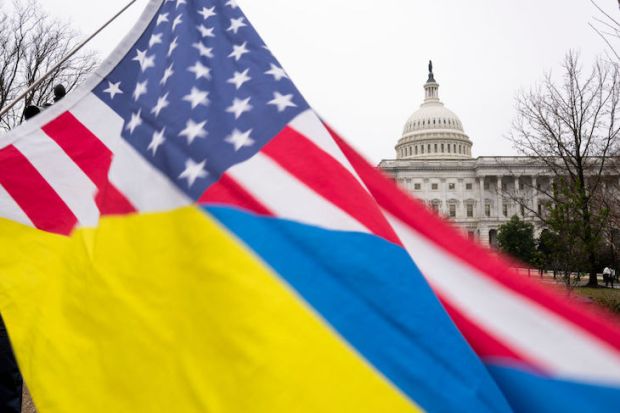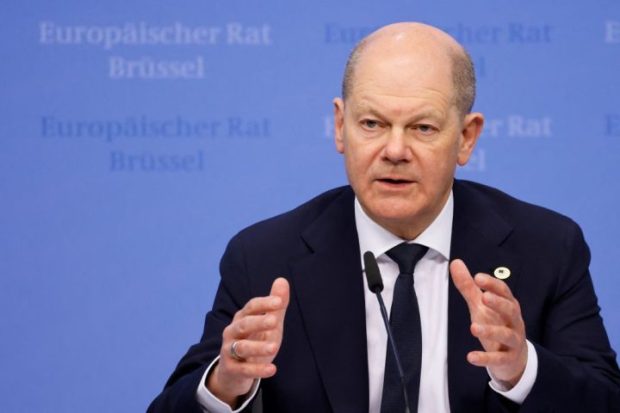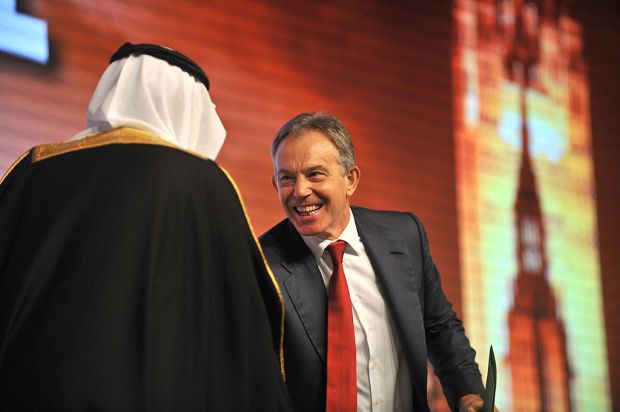There have been three major surprises for military analysts since the Russian military invaded Ukraine.
The first has been the extent of the difficulties faced by the Russian army in terms of logistics, coordination of forces, morale and mobility. The second has been the failure of the Russian air force to achieve air superiority over Ukrainian air defences, and to operate against Ukrainian ground forces at scale. The third has been the extraordinary unity and effectiveness of the Ukrainian resistance, which has significantly slowed the Russian advance in the north of Ukraine and inflicted major personnel and vehicle losses on Russian forces on all fronts.
Unfortunately, none of these factors change the overall prognosis that a military victory for Russia during the conventional combat phase of this war is very likely.
There is substantial evidence after a week of Russian military operations against Ukraine that its armed forces received little to no warning that the invasion was about to take place. The Russian strategic disinformation campaign – which revolved around categorical denials of western warnings of an imminent invasion – did succeed in preventing the Ukrainian government from mobilising or conducting preparations for civil resilience. However, it also meant that when the Russian army crossed the border into Ukraine it did so with very poor coordination, and none of the logistics or military planning in place to allow it to conduct sustained combat operations. Instead, the plan seems to have been to rely on infiltrated operatives and special forces to assassinate or capture key Ukrainian leaders, and to meanwhile drive troops along the roads in light and medium vehicles to encircle cities quickly in the hope of a rapid Ukrainian collapse and surrender talks. This did not happen.
In the north of the country near Kharkiv and north of Kiev, columns lacking the artillery, heavy armour and air defence support normally attached to Russian army formations encountered stiff Ukrainian resistance. Russian casualties were high, with many units abandoning their vehicles and surrendering in large numbers. Russia’s elite paratroopers (VDV) were inserted in daring but seemingly uncoordinated helicopter assaults, most notably at Hostomel airport to the north-west of Kiev. Too far from friendly ground forces to be rapidly reinforced, these assaults faced swift counter-attacks from Ukrainian rapid reaction forces, and casualties amongst both VDV personnel and helicopters have been heavy. This is especially significant given that aside from Chechen assault units, the VDV is the only element of the Russian assault so far to have shown significant aggression and resilient morale. Amongst Russian regular troops, there have been persistent incidents of vehicle sabotage, high rates of surrender among units which find themselves removed from the larger body of Russian forces, and a consistent narrative among captured troops that they thought they were supposed to be on exercises, not combat operations and have no desire to fight in Ukraine.
The Russian response to slow progress and heavy casualties in the north and north east has been to pour troops and equipment across the borders from Belarus and Belgorod to try and complete the encirclement of Kiev, Kharkiv, Sumy and smaller cities. But chronic logistical failures – including an apparent inability to advance off-road with wheeled vehicles due to shoddy tyre maintenance practices and the muddy terrain in northern Ukraine at this time of year – have led to huge traffic jams of Russian military equipment which have made little progress in over three days. Because of their proximity to the Russian border, the cities of Kharkiv and Sumy have successfully been encircled and brought under heavy bombardment, but Russian forces have still been unable to make major inroads into either city. Around Kiev, the attack has paused for three days, with only limited fighting in the northern outskirts of the city while the Russian amy regroups.
In the south of Ukraine, Russian forces have fared significant better. This is partly due to the proximity of Russian supply bases in the annexed territory of Crimea, and partly due to the significantly fewer Ukrainian forces which had been stationed to defend the peninsular border. The flat agricultural terrain here favours an attacking force with heavy firepower, and Ukraine has chosen to avoid major engagements outside the cities as a result. The cities of Kherson and Melitopol have reportedly fallen to Russian troops, and the major southern port city of Mariupol is encircled and has been under continuous heavy bombardment for several days. However, even in the south Ukrainian forces have continued to capture Russian military equipment and inflict significant casualty rates.
Russian forces and proxy forces have conducted attacks from the occupied territories of Donetsk and Luhansk, and have made some progress. However, their main achievement has been to fix most of the Ukrainian regular army which was positioned along the line of contact in Donbas before the invasion began – leaving the rest of the country significantly less well defended. Russian advances from Crimea in the south and Belgorod in the north east are aimed at cutting off these Ukrainian forces from Kiev and the western parts of Ukraine. Despite significant Ukrainian tactical successes, and a slower than expected Russian advance, they are very likely to complete this objective in the next few days.
One of the reasons for slower than expected Russian progress and higher casualties is that the Russian aerospace forces have so far failed to conduct large scale air operations with over 300 modern combat aircraft stationed within range of Ukraine. While initial strikes with cruise and ballistic missiles successfully blinded Ukrainian ground-based radars and did some damage to their long range but ageing S-300P surface to air missile (SAM) systems, they did not knock out the Ukrainian air force or destroy the country’s medium-range mobile SAMs. It is likely that the Russian aerospace forces were given too little notice to ready sufficient aircraft for a large scale air operation, and during the initial days of the invasion the Russian General Staff might have hoped that such an intervention would not be necessary. However, as a result of failing to conduct a successful large-scale operation to locate and destroy the remaining Ukrainian SAMs, Russian fast jets and helicopters have been forced to operate at a low altitude where numerous shoulder-fired MANPADS (portable surface-to-air missiles) such as Stinger and Igla, giving Ukrainian troops a way to inflict losses.
The limited Russian stocks of precision guided munitions and pilots proficient in using them also means that the aerospace forces’ attack aircraft and fighters have limited capabilities to find, identify and hit Ukrainian troops and vehicles from the air. They are increasingly flying sorties in small numbers against fixed targets in besieged cities, especially at night, but they have been unable to secure the skies or significantly support Russian ground forces.
The high morale and stiff resistance shown by Ukrainian forces contrasts strongly with the performance of the Russian military during the first week of its invasion. Severe sanctions and diplomatic isolation are also inflicting major costs on the Russian government and public. However, having burned their geopolitical and economic bridges, and staked it all on a rapid conquest of Ukraine, the odds of the Russian leadership backing down due to its poor military fortunes so far is almost nil. Instead, the Russian army will almost certainly continue the approach it is already pursuing at Kharkiv and Mariupol. It will fall back on heavy firepower and urban siege tactics to try and break the Ukrainian will to fight. The lack of preparation and food, medicine, water and ammunition stockpiling by the Ukrainian government in the weeks leading up to the invasion will worsen the humanitarian disaster already unfolding. But Russian forces will be trapped in a country unified against them, at the end of vulnerable supply lines and facing endemic problems with morale and a rapid influx of western-supplied, modern weaponry for Ukrainian forces in the west of the country. The next few weeks could prove even more disastrous for the Russian military than this one. But Ukrainians are already facing catastrophe, and the next phase will be worse.
Got something to add? Join the discussion and comment below.
Get 10 issues for just $10
Subscribe to The Spectator Australia today for the next 10 magazine issues, plus full online access, for just $10.



















Comments
Don't miss out
Join the conversation with other Spectator Australia readers. Subscribe to leave a comment.
SUBSCRIBEAlready a subscriber? Log in